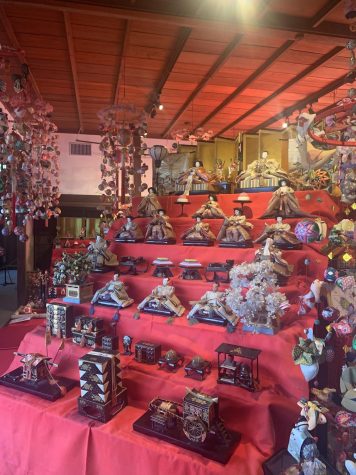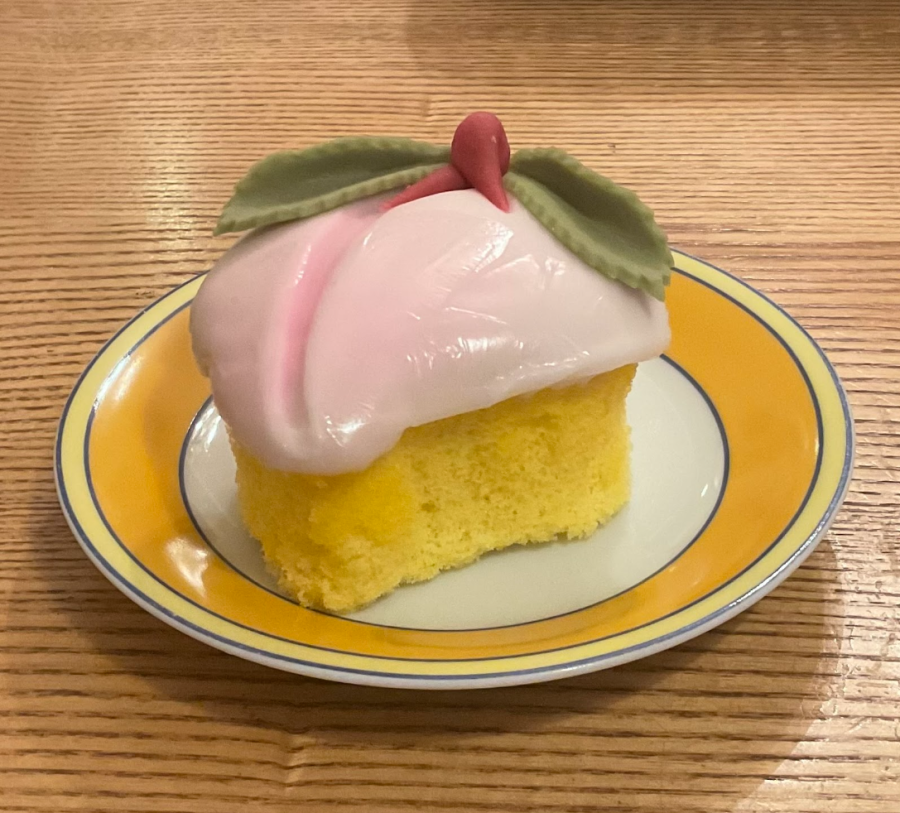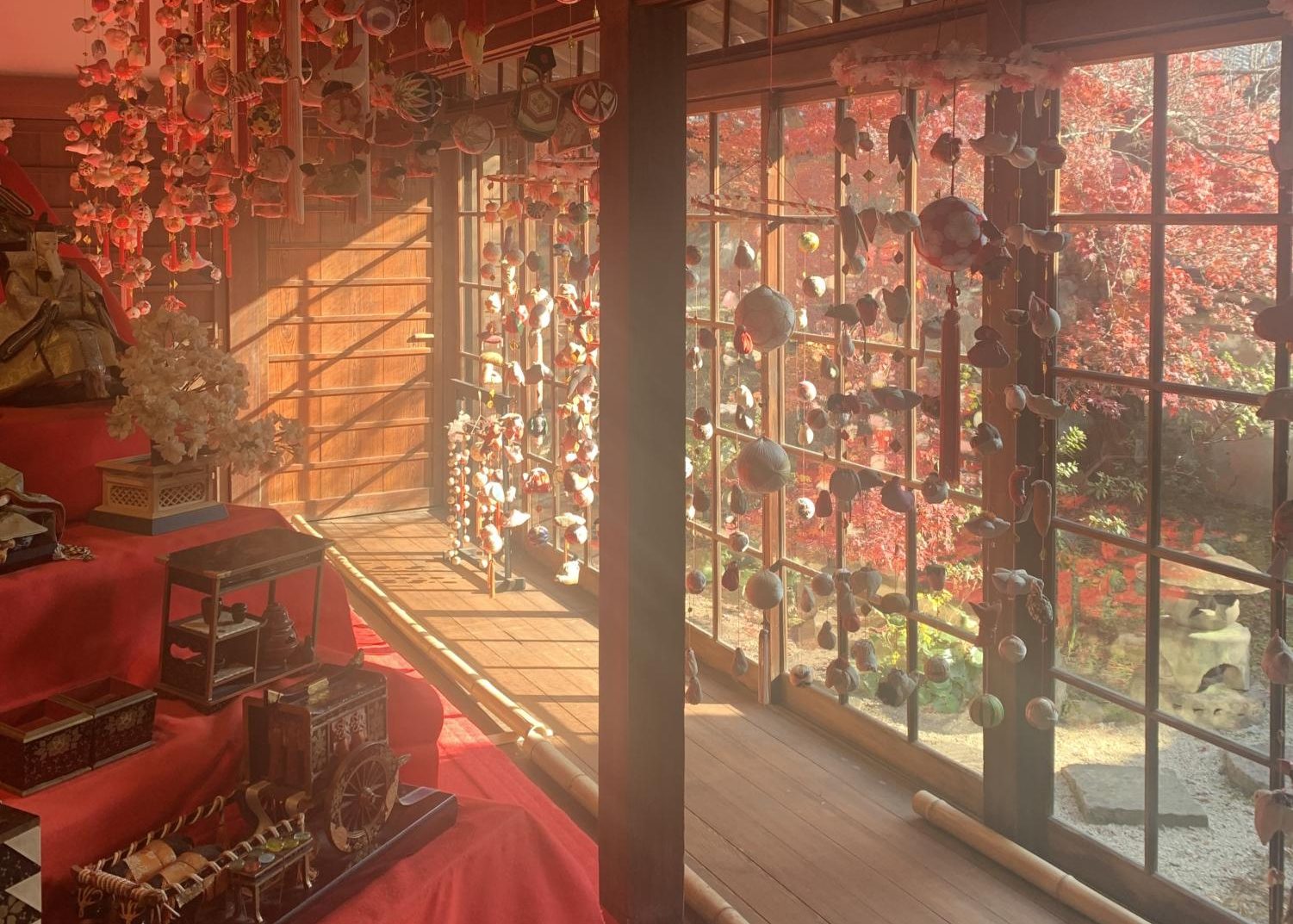Your donation will support the student journalists of Salem High School - MI. Your contribution will allow us to purchase equipment and cover our annual website hosting costs.
‘A wonderful event to celebrate the growth of girls together’: Kwassui High School students share insights about Japanese holiday, Girls’ Day
March 3, 2023
“Hinamatsuri,” also known as Girls’ Day or the Doll Festival, is a spring Japanese holiday that falls on the third day of the third month every year, March 3. It is a holiday devoted to praying for and celebrating the health and growth of girls all over the world.
“‘Hinamatsuri’ is one of the events I look forward to,” said Kwassui High School first-year student, Azumi Michikoshi. “The holiday’s image is so gorgeous and pretty. Hina dolls are displayed and special meals are eaten. These include ‘hishimochi’ [rice cakes] and ‘chirashi-zushi’ [a type of sushi].”
Many stores and other businesses in Japan decorate in preparation for the holiday by putting up “hina-ningyo,” or hina dolls. However, businesses are not the only ones who decorate for Girls’ Day.

(Fuka Nishikawa, March 2, 2023.)
Japanese residents often decorate their homes with doll sets with approximately 15 pieces, but public spaces often use sets with many more.
“I think that the places that have big dolls treat them like treasures,” said Kwassui first-year student, Fuka Nishikawa. “I decorate using small dolls. They are very cute.”
Hina dolls are set up in homes across Japan, and are usually put up a couple weeks before the holiday. Mana Tsuda, another Kwassui first-year student, says that her family’s decorations are family heirlooms passed down from older generations.
“I like to decorate my house with [the] dolls,” Tsuda said.
The decorating process can be fun, but can also be tedious. The dolls and other decorations require a specific prescribed placement on the special red-carpeted five-to-seven-step structure. Each structure’s doll placement varies slightly depending on the household, but follows the same basic rules.
On the top step, the most important dolls–the imperial dolls–represent the emperor and empress. The doll set and all of the other pieces on the steps as a whole represent the imperial family.

Below them, the “san-nin kanjo,” or three court ladies and “go-nin bayashi,” or five musicians, sit on the second and third tiers. The three court ladies serve sake, a Japanese rice alcohol, to the emperor and empress dolls. The five musicians include three drummers, one flutist and one singer.
On the fourth tier from the top, two ministers sit on either end of the step. Their physical position, left or right, represents the opposing political parties. The court minister of the right is placed on the left and the court minister of the left sits on the right side, with The Minister of the Left being represented as an older man due to his seniority over the Minister of the Right.
The fifth tier is home to three dolls and two miniature tree decorations. On the leftmost side sits a mandarin orange tree, while a cherry blossom tree sits on the rightmost side. Between the trees sit three of the imperial couple’s helpers, called the crying, angry and laughing drinkers.
Not every step structure has seven tiers, but for those that do the remaining bottom two levels are often decorated with various miniature furniture pieces used within and outside of the palace. “Hishimochi,” diamond-shaped multi-colored rice cakes, and lampstands or paper lanterns are also placed amongst the dolls.
Sawa Tanaka, a Kwassui High School student, recalls memories of celebrating the holiday with her family.
“We eat ‘chirashizushi’ every year,” said Tanaka.
“Chirashizushi,” a type of sushi, is one of many common foods associated with Girls’ Day. “Hina-arare,” or spherical multi-colored rice crackers, “hishi mochi,” or diamond-shaped rice cakes and “sakura mochi,” or cherry blossom rice cakes, are also enjoyed by people across the country.
Another common food eaten during Girls’ Day is peach sponge cake.
“In Nagasaki, we eat a food called ‘momo castella,’ or peach sponge cake,” said Nishikawa.

According to Ayako Motokimida at Matcha, the timing of the Doll Festival historically corresponded to the blossoming of peach trees before Japan switched to a Gregorian calendar. The peach blossom–a symbol of luck in both Chinese and Japanese culture–was commonly seen near the original date for Girls’ Day.
The festival dates back to the Edo Era (1603-1867), a time period when the dolls were used to ward off evil spirits and bad luck, but today, the dolls are placed to honor the holiday’s tradition. As reported in Arigato Travel, families with daughters pray and offer food to the dolls to cultivate good luck for their daughter’s future. However, if families do not take down decorations the day after the festival, superstition says that it will result in a late marriage for the daughter. More likely, the decorations are put away quickly to avoid damaging them during the humid season that occurs after the festival, reportsaccording to the Japan Rail Pass Travel blog.
Another decoration that can be seen throughout some regions of the country is ‘tsurushi-bina,’ otherwise known as hanging dolls. Various decorations hang from a colored string, ranging from miniature dolls to flowers and are displayed from the ceilings of homes, businesses and other public places.
Satsuki Kodan, Kwassui High School English course student, said that the hina dolls and other decorations “add excitement [to the holiday] and bring people together.”
Although the holiday is often translated to “Girls’ Day,” at its core, the holiday is simply an enjoyable way to spend time with family and friends. To Kodan and many other Japanese, “Hinamatsuri” is “a wonderful event to celebrate the growth of girls together.”
